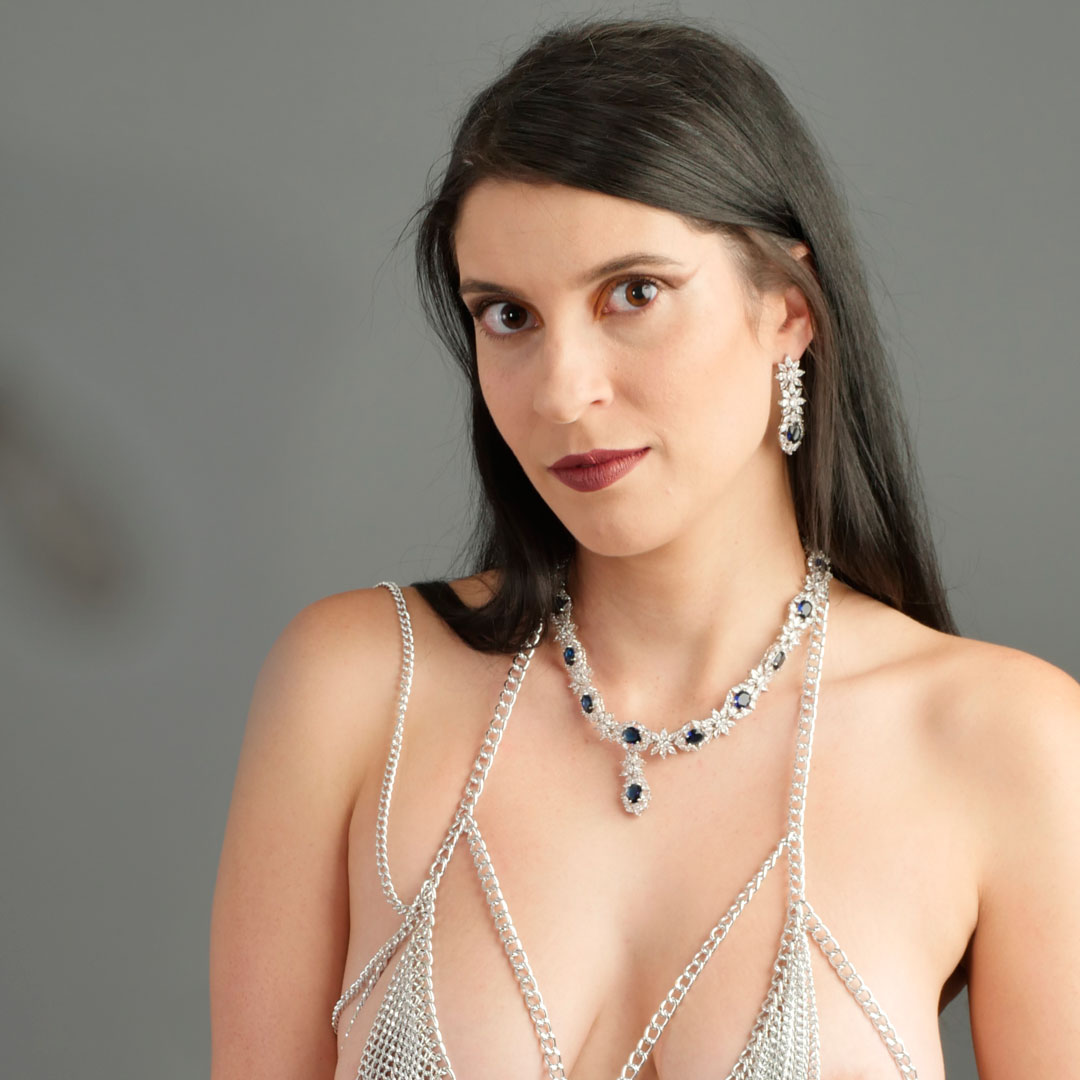Today’s Post by Joe Farace
“Cleanliness becomes more important when godliness is unlikely.”— P. J. O’Rourke
 I’ve often asked, somewhat rhetorically, Is a Clean Camera a Happy Camera? Recently, I’ve expanded that concept to “Is a Clean Sensor is a Happy Sensor? Let me tell you why:
I’ve often asked, somewhat rhetorically, Is a Clean Camera a Happy Camera? Recently, I’ve expanded that concept to “Is a Clean Sensor is a Happy Sensor? Let me tell you why:
After several years—Covid got in the way—I recently had a studio shoot with the amazing Erin Valakari who had only gotten more beautiful during the time since our last shoot together. I started our session with a warm up series of images that was shot using my Panasonic Lumix GH4.
Our next setup was a series with Erin wearing a chain mail dress* and I switched cameras to a Lumix G9 that I purchased two years ago and had used very little since. Then I mounted a Leica DG Macro-Elmarit 45mm f/2.8 Asph. Mega OIS lens that I purchased used from KEH.
 I held the camera up to my eye; Erin looked stunning in that dress and snapped the shutter. BAM! When the photo appeared in the EVF there was a shadowy blob on the left side of the frame! (See above right.) I checked to see if the camera strap was hanging in front of the lens—one of my favorite stupid moves—but that wasn’t it. Then I removed the lens and staring back at me was a big (for a Micro Four-thirds sensor) glob of something stuck on the sensor. After a feeble attempt at cleaning the sensor, I switched the lens to my Lumix GH4 but if I wanted to use G9 in the future, it needed a sensor cleaning.
I held the camera up to my eye; Erin looked stunning in that dress and snapped the shutter. BAM! When the photo appeared in the EVF there was a shadowy blob on the left side of the frame! (See above right.) I checked to see if the camera strap was hanging in front of the lens—one of my favorite stupid moves—but that wasn’t it. Then I removed the lens and staring back at me was a big (for a Micro Four-thirds sensor) glob of something stuck on the sensor. After a feeble attempt at cleaning the sensor, I switched the lens to my Lumix GH4 but if I wanted to use G9 in the future, it needed a sensor cleaning.
How I made this portrait: I photographed Erin (at left) in my home studio using a Lumix GH4 with a Leica DG Macro-Elmarit 45mm f/2.8 lens and an exposure of 1/125 sec at f/8 and ISO 200. Lighting was provided by a Paul C. Buff DigiBee with Plume Ltd Wafer softbox attached that was placed at camera right. Another DigiBee with an 18-OMNI reflector was placed behind a 42 x72-inch Scrim Jim with white translucent cover. In the back (camera left) of my studio, I placed a Paul C Buff Alien Bee with 16 x 30-inch Westcott Apollo Strip soft box. Background was a 5×7-foot Photo Grey Savage Infinity vinyl background.
After the shoot, I took the Panasonic Lumix G9 to Denver Pro Photo who offers a sensor-cleaning package that includes an in-depth cleaning of a DSLR or mirrorless camera. They clean all the dirt and grime off the camera body and lens, then clean the lens shell including front and rear elements, contacts and lens caps. Inside the camera they clean the mirror (if it has one) and focus screen along with the LCD screen, battery, media compartments and eyepiece. All for the tidy sum of $69.95. And here’s what happened…
The price is for for a two-day turnaround; they have a slightly more expensive option ($79.95) with a one-day turnaround. I dropped the camera off on Monday morning and early Wednesday afternoon received a phone call (that I missed) and then an email from Harold, the General Manager, saying the camera was ready to pick up.
When he handled me the camera I was struck by how clean it was; it looked like a brand new G9. Then Harold asked me a few questions about how I handled it then told me the big glob on the sensor looked, to him, like an insect wing. Then he went on to tell me that finding bits of bugs inside cameras is not all that unusual. When I looked at the before and after photos he provides, the “blob” clearly looked like a bug’s wing then there were also specks all over of the middle of the sensor where i indelicately tried to clean it off, only to make a bigger mess. Hey kids, here’s a tip: If you don’t have the tools or the skills, leave sensor cleaning to the pros, like Harold.
 If you enjoyed today’s blog post and would like to buy Joe a cup of Earl Grey tea ($2.50), click here. And if you do, thanks so much.
If you enjoyed today’s blog post and would like to buy Joe a cup of Earl Grey tea ($2.50), click here. And if you do, thanks so much.
My book Joe Farace’s Glamour Photography is full of tips, tools and techniques for glamour and boudoir photography with new copies available from Amazon for $34.13, as I write this. Used copies start at the hard-to-beat price price of nine bucks and the Kindle version is only $19.99 for those who prefer a digital format.